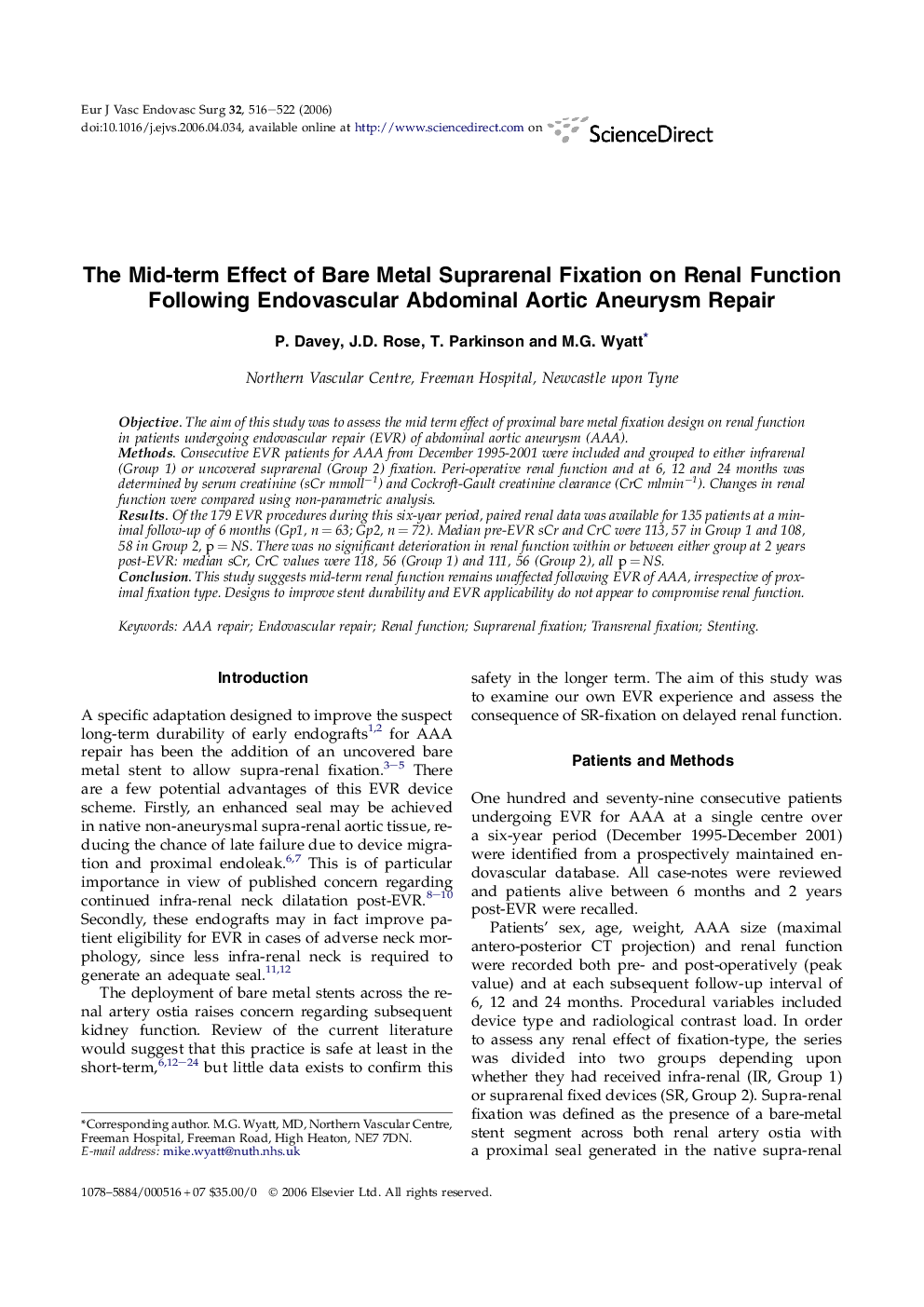| Article ID | Journal | Published Year | Pages | File Type |
|---|---|---|---|---|
| 2914745 | European Journal of Vascular and Endovascular Surgery | 2006 | 7 Pages |
ObjectiveThe aim of this study was to assess the mid term effect of proximal bare metal fixation design on renal function in patients undergoing endovascular repair (EVR) of abdominal aortic aneurysm (AAA).MethodsConsecutive EVR patients for AAA from December 1995-2001 were included and grouped to either infrarenal (Group 1) or uncovered suprarenal (Group 2) fixation. Peri-operative renal function and at 6, 12 and 24 months was determined by serum creatinine (sCr mmoll−1) and Cockroft-Gault creatinine clearance (CrC mlmin−1). Changes in renal function were compared using non-parametric analysis.ResultsOf the 179 EVR procedures during this six-year period, paired renal data was available for 135 patients at a minimal follow-up of 6 months (Gp1, n = 63; Gp2, n = 72). Median pre-EVR sCr and CrC were 113, 57 in Group 1 and 108, 58 in Group 2, p = NS. There was no significant deterioration in renal function within or between either group at 2 years post-EVR: median sCr, CrC values were 118, 56 (Group 1) and 111, 56 (Group 2), all p = NS.ConclusionThis study suggests mid-term renal function remains unaffected following EVR of AAA, irrespective of proximal fixation type. Designs to improve stent durability and EVR applicability do not appear to compromise renal function.
